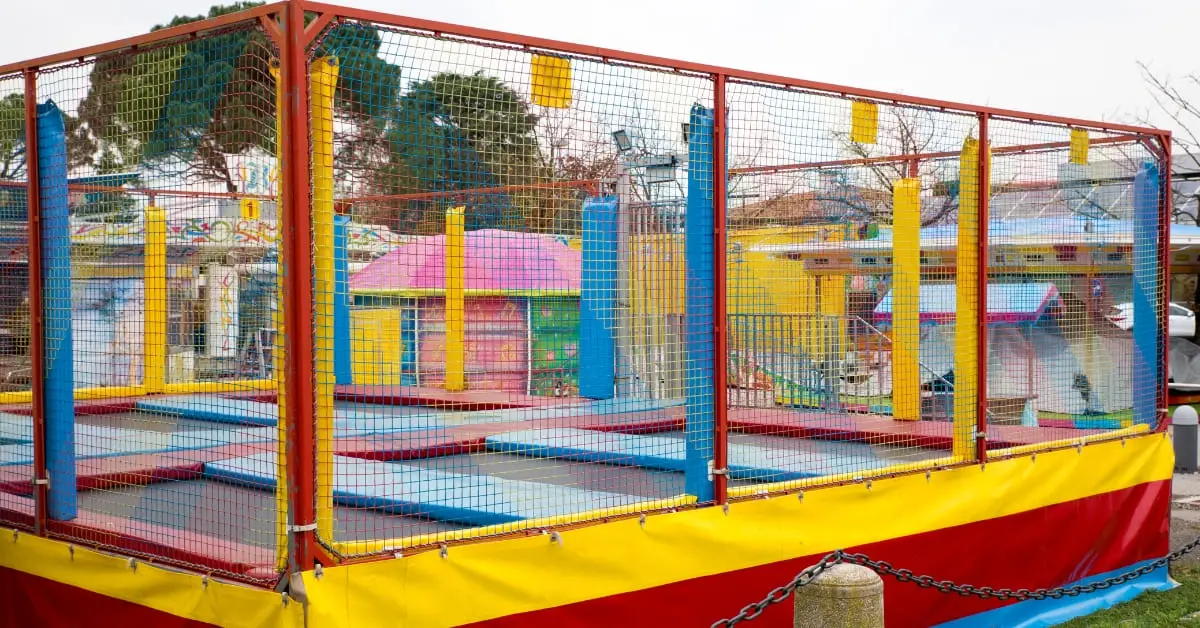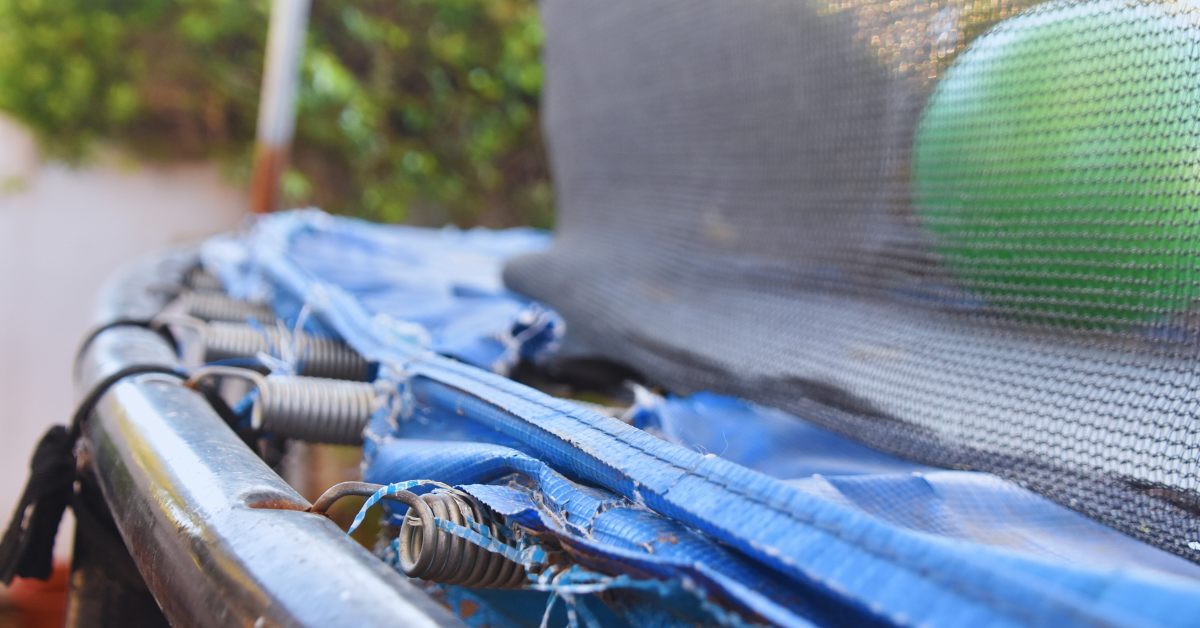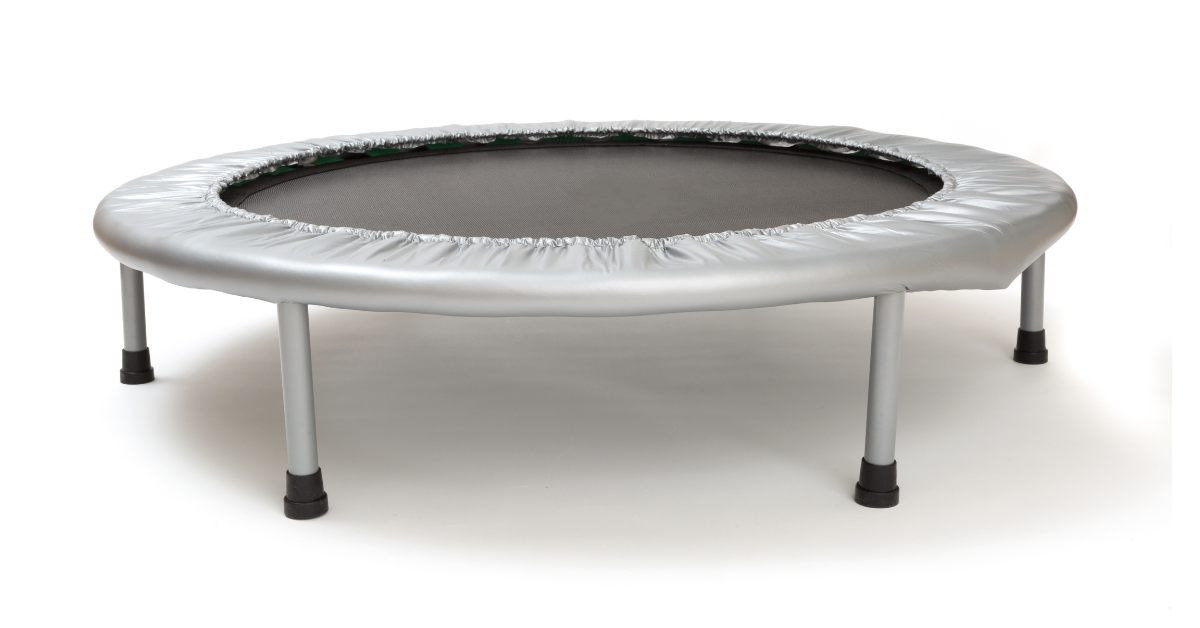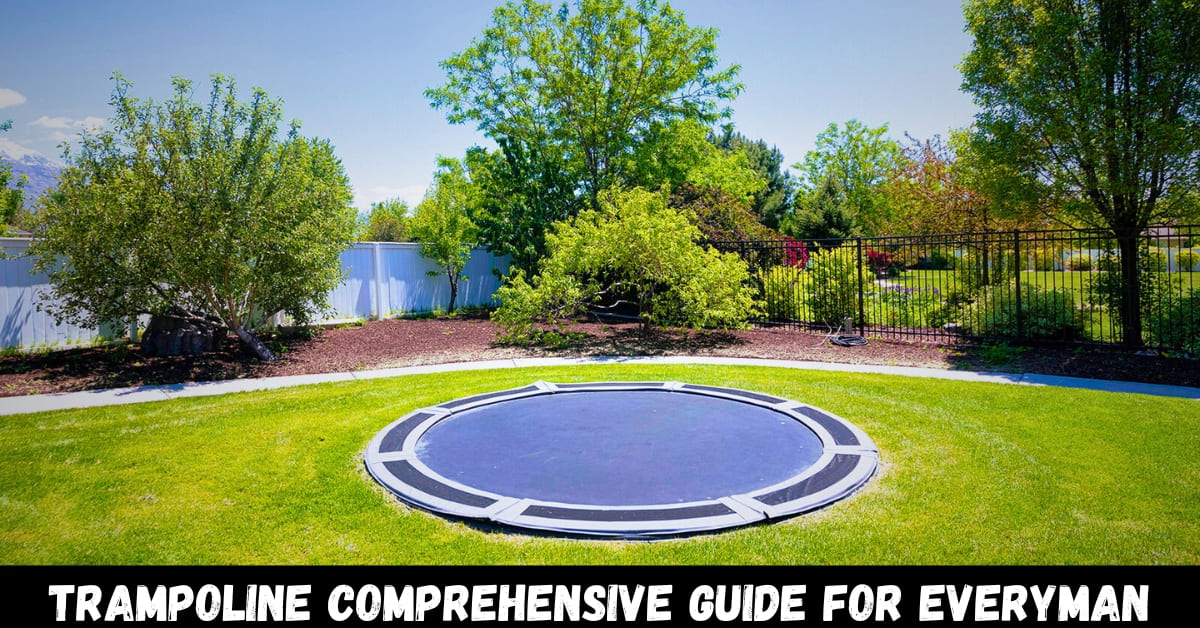Discover everything you need to know about trampolines in this ultimate guide. From safety tips to buying advice, jump into the world of bouncing fun!
This article provides a trampoline comprehensive guide for everyman, aiming to offer in-depth knowledge and authoritative information for individuals interested in the subject matter.
The content covers various aspects, including:
- The history and evolution of trampolines
- An overview of different types available
- Considerations for selecting the appropriate size based on available space
- Safety guidelines to be followed
- Step-by-step instructions for setting up a trampoline
- Safety tips for both children and adults
- Understanding weight limits and capacity
- Explaining key differences between trampolines and rebounders
- Providing a yearly maintenance checklist.
Trampoline Comprehensive Guide for Everyman: Ultimate trampoline guide, catering to beginners and enthusiasts alike. Learn about safety tips, proper techniques, maintenance, and various fun exercises to make the most of your trampoline experience.
History and Evolution of Trampolines

The history and evolution of trampolines can be traced back to the early 20th century, with several notable advancements and modifications occurring over time.
The concept of a trampoline was first developed by George Nissen and Larry Griswold in the late 1930s. Their design consisted of a steel frame supporting a taut canvas sheet, which allowed for bouncing and acrobatic movements.
In the following years, improvements were made to enhance safety and performance, such as the introduction of coiled steel springs instead of rubber bands. Additionally, materials like nylon replaced canvas for increased durability.
Today, trampolines come in various sizes and shapes, including rectangular and circular designs. They also incorporate safety features like enclosure nets and padding around the edges to prevent injuries during use.
The evolution of trampolines has transformed them from simple recreational devices into versatile training tools used in gymnastics, acrobatics, fitness programs, and even rehabilitation exercises.
Types of Trampolines: A Comprehensive Overview
One type of trampoline that is commonly used is the round trampoline, which has a circular shape and provides users with a consistent bounce. Round trampolines offer several advantages over other types:
- Safety: The circular design evenly distributes the tension across the surface, reducing the risk of injury.
- Stability: The frame and springs are positioned symmetrically, ensuring stability during use.
- Versatility: Round trampolines are suitable for both recreational and competitive purposes, making them popular among families and athletes alike.
Additionally, round trampolines are available in various sizes to accommodate different age groups and skill levels. They often come with safety enclosures to prevent falls off the edge.
Furthermore, this type of trampoline allows for multiple users at once, promoting social interaction and shared experiences.
Overall, round trampolines provide a safe and enjoyable bouncing experience for individuals seeking to belong within their community or family setting.
Choosing the Right Trampoline Size for Your Space
To ensure proper fit in a given space, selecting an appropriate trampoline size is crucial. The size of the trampoline will depend on factors such as the available space, intended use, and number of users.
It is important to carefully consider these factors to ensure safety and optimal enjoyment. Below is a table that provides a guide for selecting the right trampoline size based on the number of users.
| Number of Users | Trampoline Size |
|---|---|
| 1-2 | 8-10 feet |
| 2-3 | 10-12 feet |
| 3-4 | 12-14 feet |
| 4+ | 14+ feet |
Understanding Trampoline Safety Guidelines
Understanding trampoline safety guidelines involves familiarizing oneself with recommended practices for minimizing the risk of injuries during trampoline use. These guidelines are crucial to ensure a safe and enjoyable experience for both children and adults.
Firstly, it is essential to place the trampoline on level ground, away from any hazards such as trees or fences. Additionally, ensuring that the trampoline is properly assembled and securely anchored is of utmost importance.
Regular maintenance checks should be carried out to identify any signs of wear or damage, and immediate repairs should be made if necessary.
Furthermore, only one person should use the trampoline at a time, and jumpers should avoid attempting dangerous stunts or flips that could lead to injury.
Lastly, adult supervision is highly recommended when children are using the trampoline in order to provide additional safety measures and prevent accidents.
Setting Up Your Trampoline: Step-by-Step Instructions
When setting up a trampoline, it is important to ensure that the surface is level and free from any potential hazards such as trees or fences. To provide a comprehensive understanding of the process, consider the following steps:
- Clear the area: Remove any obstacles or debris near the trampoline to create a safe environment.
- Assemble the frame: Follow the manufacturer’s instructions to securely connect all frame components.
- Attach the jumping mat and springs: Carefully attach each spring to its corresponding hole on the mat, ensuring a tight and even distribution.
By adhering to these steps, you can confidently set up your trampoline in a manner that promotes safety and enjoyment.
Remember to consult your specific trampoline’s manual for additional guidelines and precautions.
Essential Trampoline Accessories for Maximum Fun
One important aspect to consider when enhancing the enjoyment of trampolining is the selection of appropriate accessories. These accessories not only add an extra layer of fun but also contribute to safety and comfort during trampoline use.
One essential accessory is a safety net enclosure, which provides a barrier around the trampoline that prevents accidental falls and injuries.
Another important accessory is a weather cover, which protects the trampoline from elements such as rain, snow, and UV rays, prolonging its lifespan.
Additionally, foam padding or spring covers can be used to protect users from potential injuries caused by contact with springs or frame edges.
Furthermore, ladder attachments can be added to facilitate easy access to the trampoline for all users.
Proper Trampoline Maintenance and Care Tips

Proper maintenance and care of a trampoline is essential to ensure its longevity and safe usage. Regular upkeep of the trampoline not only extends its lifespan but also ensures that it functions optimally, minimizing the risk of accidents or injuries.
To begin with, it is important to regularly inspect the trampoline for any signs of wear and tear, such as damaged springs or torn matting.
Additionally, keeping the trampoline clean by removing debris and leaves helps prevent deterioration caused by moisture accumulation.
Proper storage during inclement weather conditions, such as heavy rain or snowfall, is crucial in protecting the trampoline from damage.
Lastly, adhering to weight limits and ensuring proper assembly is paramount for safe usage.
Exploring Different Trampoline Brands and Manufacturers
Proper trampoline maintenance and care are essential for ensuring its longevity and safe usage. However, when it comes to selecting a trampoline, the options available can be overwhelming.
Exploring different trampoline brands and manufacturers is crucial in order to make an informed decision. Numerous factors should be considered such as the reputation of the brand, safety features offered, product quality, customer reviews, and warranty terms.
Well-established brands often prioritize safety by incorporating innovative design elements and using durable materials. Additionally, they may offer a wider range of models with varying sizes and features to cater to different user preferences.
Benefits of Trampoline Exercise for Fitness and Health
Engaging in trampoline exercise offers numerous benefits for physical fitness and overall health.
Trampoline workouts provide a low-impact form of cardiovascular exercise that can improve cardiovascular endurance and promote weight loss.
The constant bouncing engages multiple muscle groups, including the legs, core, and upper body, which helps to build strength and improve muscular endurance.
Additionally, trampoline exercises enhance balance, coordination, and agility through the continuous need to maintain stability while bouncing.
Regular trampoline exercise can also lead to improved bone density due to the impact forces experienced during jumping.
Furthermore, trampolining has been shown to have positive effects on mental health by reducing stress levels and promoting feelings of happiness and relaxation.
Overall, incorporating trampoline exercise into one’s fitness routine can contribute to improved physical fitness and overall well-being.
Trampoline Safety Nets: Do You Really Need One?
The previous subtopic explored the various benefits of trampoline exercise for fitness and health. Now, let us delve into the question of whether one really needs a trampoline safety net.
Trampoline safety nets are designed to provide an additional layer of protection, preventing users from falling off the trampoline and potentially getting injured.
While some argue that proper supervision and cautionary measures suffice, others emphasize the importance of having a safety net as an effective preventive measure against accidents.
Research indicates that safety nets can significantly reduce the risk of injuries by creating a physical barrier around the trampoline area. Moreover, they offer peace of mind to parents and guardians, knowing that their loved ones are protected while enjoying this recreational activity.
Ultimately, the decision regarding whether or not to invest in a trampoline safety net depends on individual circumstances and preferences for ensuring optimal safety during use.
How to Choose the Best Trampoline Mat for Longevity
One important consideration when selecting a trampoline mat for longevity is its material composition. The durability and resilience of the mat largely depend on the materials used in its construction. Here are three key factors to consider:
- Material strength: Look for mats made from high-quality polypropylene or polyethylene, as these materials offer excellent strength and resistance to wear and tear.
- UV protection: Exposure to sunlight can cause the mat to deteriorate over time. Opt for mats that are treated with UV stabilizers, which help prevent fading and degradation due to sun exposure.
- Stitching quality: The stitching on the trampoline mat plays a crucial role in its longevity. Ensure that the stitches are tight, reinforced, and made from durable threads that can withstand constant bouncing and stretching.
Trampoline Springs: Which Type Is Right for You?

When selecting trampoline springs, it is important to consider factors such as material composition, length, and coil design to ensure optimal performance and safety.
The material composition of the springs can greatly impact their durability and ability to withstand the constant bouncing and weight of users. High-quality steel springs are commonly used due to their strength and resilience.
Additionally, the length of the springs will determine the level of tension and bounce provided by the trampoline. Longer springs generally offer a softer bounce while shorter ones provide a firmer bounce.
Finally, coil design also plays a role in determining the overall performance of the trampoline. Springs with tighter coils tend to offer more resistance, resulting in a higher bounce.
It is crucial for individuals to carefully consider these factors when choosing trampoline springs in order to ensure a safe and enjoyable experience while using the equipment.
Trampoline Safety Pads: Importance and Buying Guide
Trampoline safety pads are essential accessories that protect users from potential injuries by covering the springs and frame of the equipment. These pads act as a cushion, reducing the risk of accidents while bouncing.
When purchasing trampoline safety pads, it is important to consider several factors:
- Material: Look for high-quality, durable materials such as PVC or vinyl that can withstand outdoor elements.
- Thickness: Opt for thicker padding to provide better shock absorption and protection.
- Size: Ensure that the safety pad covers the entire perimeter of the trampoline to prevent any exposed areas.
- Attachment method: Choose safety pads with secure attachment mechanisms like straps or buckles to keep them in place during use.
Trampoline Anchoring: Securing Your Trampoline
To ensure the stability and safety of a trampoline, it is crucial to properly anchor the equipment. Trampolines are prone to tipping over or being moved by strong winds, posing a significant risk to users.
Anchoring the trampoline securely prevents these accidents and creates a stable platform for jumping. There are various methods available for anchoring trampolines, each with its own advantages and disadvantages.
The following table provides an overview of three common trampoline anchoring methods:
| Anchoring Method | Description | Pros |
|---|---|---|
| Ground Stakes | Metal stakes driven into the ground around the trampoline legs. | – Relatively inexpensive |
- Easy to install
- Effective in preventing tip-over |
| Sandbags | Heavy bags filled with sand placed on top of the trampoline base or tied to the frame. | – Portable - No need for permanent installation
- Suitable for areas with restrictions on ground penetration |
| Anchor Kits | Straps attached to the trampoline legs, secured to heavy objects such as concrete blocks buried in the ground. | – Provides additional stability - Adjustable tension
- Suitable for areas with limited space |
While all three methods can effectively anchor a trampoline, it is important to choose one that suits your specific needs and environment. Consider factors such as budget, portability requirements, local regulations, and soil conditions when selecting an anchoring method.
Regularly inspecting and maintaining your chosen anchoring system will help ensure continued safety while using your trampoline.
Trampoline Safety Enclosures: What You Should Know
Installing safety enclosures around trampolines provides a protective barrier to prevent users from falling off the equipment. These enclosures are designed to create a secure environment for trampoline users, especially children, reducing the risk of accidents and injuries.
Here are three key points about trampoline safety enclosures:
- Enhanced Safety: Trampoline safety enclosures consist of sturdy nets or walls that surround the entire jumping area. They act as a physical barrier to prevent users from accidentally bouncing off the trampoline and onto the ground, minimizing the potential for falls.
- Peace of Mind: By installing a safety enclosure, parents and guardians can have peace of mind knowing that their loved ones are protected while enjoying their time on the trampoline. It adds an extra layer of security and reduces anxiety about potential accidents or injuries.
- Compliance with Guidelines: Many trampolines come with safety enclosure recommendations or requirements set by manufacturers or regulatory bodies such as ASTM International. Installing these enclosures ensures compliance with these guidelines and promotes the responsible use of trampolines.
Overall, adding a safety enclosure to your trampoline significantly enhances its safety features, providing protection and reassurance for everyone using it.
Fun Trampoline Games and Activities for All Ages
Moving on from discussing trampoline safety enclosures, we will now delve into the realm of fun trampoline games and activities suitable for individuals of all ages.
Engaging in these recreational pursuits not only promotes physical fitness but also provides entertainment and fosters social interaction among participants.
Various options are available to cater to different skill levels and preferences, such as trampoline basketball, where participants can showcase their dexterity while attempting impressive slam dunks, or trampoline dodgeball, which combines agility and strategy in a thrilling team-based competition.
Additionally, individuals seeking a more laid-back experience can partake in activities like trampoline yoga or simply enjoy bouncing around for sheer enjoyment.
These enjoyable pastimes offer an inclusive environment that allows people to connect with others who share similar interests while creating lasting memories of camaraderie and shared experiences.
Trampoline Safety Tips for Children and Adults
When considering the safety of trampoline use for both children and adults, it is important to adhere to certain guidelines and precautions.
Trampolines can be a source of great fun and physical activity, but they also pose potential risks if not used correctly. To ensure the safety of all users, it is crucial to follow manufacturer instructions for assembly and maintenance.
Additionally, a properly installed safety net enclosure should be in place to prevent falls from the trampoline. Users should remove shoes, jewelry, and any sharp objects before engaging in trampoline activities.
Proper supervision is essential, especially when children are involved. It is advisable to limit the number of users on the trampoline at one time and avoid stunts or flips that can increase the risk of injury.
Understanding Weight Limits and Trampoline Capacity
To ensure the safety of trampoline users, it is important to have a thorough understanding of weight limits and trampoline capacity. Trampolines are designed to accommodate specific weight ranges in order to maintain structural integrity and prevent accidents.
Here are three key factors to consider when it comes to weight limits and trampoline capacity:
- Manufacturer’s Guidelines: Always refer to the manufacturer’s guidelines for the specific trampoline model you own. These guidelines will provide information on the maximum weight capacity that the trampoline can safely handle.
- Individual Weight: It is crucial to consider the weight of each individual using the trampoline. The combined weight of multiple users should not exceed the recommended limit specified by the manufacturer.
- Dynamic Loads: Trampolines experience dynamic loads when users jump or perform various movements. These loads can significantly impact its overall capacity, so it is essential to be mindful of how much stress these activities put on the trampoline structure.
Having a clear understanding of weight limits and trampoline capacity ensures a safe and enjoyable experience for all users while preventing unnecessary injuries or damage to the equipment.
Trampoline Vs. Rebounder: Key Differences Explained

A comparison of trampolines and rebounders reveals several key differences in terms of size, design, and usage.
Trampolines are typically larger than rebounders and are available in various sizes, ranging from small backyard models to large professional-grade ones. They have a sturdy frame with springs or elastic bands that provide the bouncing effect.
In contrast, rebounders are compact and portable exercise equipment designed for indoor use. They usually have a smaller diameter and feature a tight mat attached to a springless frame, which allows for low-impact bouncing movements.
Trampolines are commonly used for recreational purposes, such as jumping and performing acrobatic tricks, while rebounders are primarily utilized for fitness activities like aerobic exercises and rehabilitation programs.
Understanding these distinctions can help individuals choose the appropriate equipment based on their specific needs and preferences within the realm of physical activity.
Trampoline Maintenance Checklist: Yearly Tasks to Remember
One important aspect of trampoline maintenance is to regularly inspect the frame for any signs of damage or wear. This is crucial in ensuring the safety and longevity of the trampoline.
Here are three key tasks to remember when it comes to trampoline maintenance:
- Clean the surface: Remove any debris, leaves, or dirt that may have accumulated on the trampoline surface. This can be done using a soft brush or broom.
- Check springs and mat: Inspect all the springs and ensure they are securely attached to both the frame and mat. Look for any signs of rust, stretching, or damage. Similarly, examine the mat for tears, holes, or excessive wear.
- Secure enclosure net: If your trampoline has an enclosure net, make sure it is properly secured and free from any rips or tears. Check that all fasteners are tight and functioning correctly.
Frequently Asked Questions About Trampoline Comprehensive Guide for Everyman
Q:1 Can Trampolines Be Used Indoors?
Trampolines can indeed be used indoors. Indoor trampolines are designed specifically for indoor use, with features such as a smaller size and additional safety measures to ensure the trampoline can be safely used within an indoor environment.
Q:2 How High Can Someone Bounce on a Trampoline?
The height at which someone can bounce on a trampoline depends on several factors, including the individual’s weight, jumping technique, and the quality of the trampoline. Generally, higher bounces can be achieved by exerting more force and utilizing proper bouncing techniques.
Q:3 Trampolines Suitable for People of All Ages?
The suitability of trampolines for people of all ages is a topic that has been extensively studied. Research suggests that while trampolines can provide recreational benefits, caution must be exercised to prevent injuries in younger children and older adults.
Q:4 Can Trampolines Help in Improving Balance and Coordination?
Trampolines have been found to be effective in improving balance and coordination. Research suggests that regular trampoline use can enhance motor skills, proprioception, and spatial awareness, making it a valuable tool for individuals of all ages seeking to improve these abilities.
Q:5 Are There Any Health Benefits Associated With Using a Trampoline Regularly?
The regular use of a trampoline has been associated with several health benefits. These include improved cardiovascular fitness, increased muscle strength and endurance, enhanced balance and coordination, and decreased risk of chronic diseases such as obesity and diabetes.
Conclusion:
Trampolines have come a long way since their inception, with various types now available in the market. This comprehensive guide provides an overview of trampoline history, types, safety guidelines, setup instructions, and maintenance checklist.
It emphasizes the importance of choosing the right size and understanding weight limits to ensure safety for both children and adults. Additionally, it distinguishes trampolines from rebounders by highlighting key differences.
By following this guide, every individual can enjoy the benefits of trampolining while minimizing risks and ensuring optimal performance.
We hope you will be very well aware of Trampoline Comprehensive Guide for Everyman, after reading this comprehensive article. If you have any questions, feel free to comment below!

